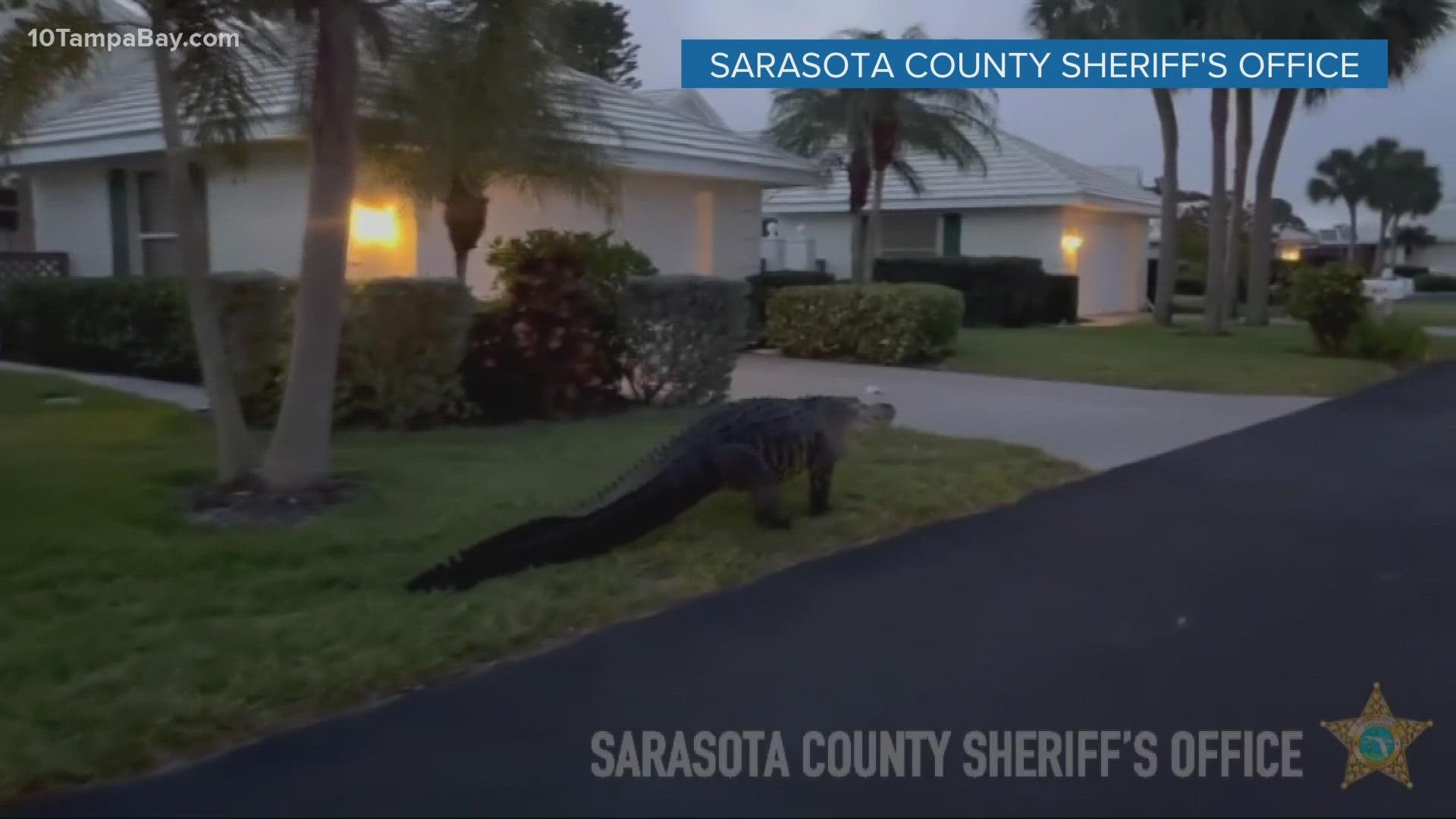VENICE, Fla. — Sheriff's deputies captured video of a large alligator crawling through a front yard in Florida before making its way into a community lake.
The video was taken Sunday morning in Venice, Florida, the Sarasota County Sheriff's Office said in a Facebook post.
"We’re guessing he was about 10 feet in length and boy, did he take his time making it back to the lake he came from," the sheriff's office wrote. "We can’t blame him just thinking about how heavy that tail must be."
While this may not be shocking to Floridians, people in less gator-y states might be surprised to learn the reptiles can get even bigger. According to the National Wildlife Federation, alligators can grow to more than 12 feet long and weigh up to 1,000 pounds.
The sheriff's office notified the Florida Fish and Wildlife Conservation Commission -- but said they didn't get a response. They also warned neighbors to be on alert because the alligator sauntered down to Harrington Lake to take an Easter morning swim.
Venice is south of Tampa on Florida's Gulf Coast.
Some alligator facts from the National Wildlife Federation:
- American alligators are also known by the scientific name Alligator mississippiensis.
- Those long, heavy tails may be awkward on land, but they help propel alligators through the water. Alligators also use their tails to dig burrows in mud for nesting and to keep warm.
- You can tell the difference between alligators and crocodiles by looking at their snouts -- not that you should generally get that close. Alligators have a wide, round snout, while crocodiles' snouts are longer and thinner with a "v" shape. American crocodiles are much rarer than their alligator cousins.
- As an American alligator’s teeth wear down, new ones grow in. They can go through 3,000 teeth in a lifetime.
- While they were once on the endangered list, American alligators are now classified as a species of least concern. The main threat they face is habitat loss as wetlands are drained and developed.

